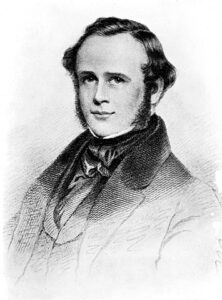 Horace Wells (January 21, 1815 – January 24, 1848) was a pioneering American dentist and physician who played a crucial role in the development and early experimentation of anesthesia. His work laid the foundation for the use of anesthesia in medical procedures, revolutionizing the field of surgery and patient care.
Horace Wells (January 21, 1815 – January 24, 1848) was a pioneering American dentist and physician who played a crucial role in the development and early experimentation of anesthesia. His work laid the foundation for the use of anesthesia in medical procedures, revolutionizing the field of surgery and patient care.
Early Life and Dental Practice
Horace Wells was born in Hartford, Vermont, and grew up with a keen interest in dentistry. He pursued dental training and opened his own dental practice in Hartford. Wells was an innovative thinker and sought ways to make dental procedures more comfortable for his patients, often experimenting with pain relief methods.
Discovery of Nitrous Oxide
Wells became intrigued by the effects of nitrous oxide, commonly known as “laughing gas,” which was being used for recreational purposes in public demonstrations. He attended one such demonstration in 1844 and noticed that a man who had inhaled nitrous oxide injured his leg but showed no signs of pain. This observation sparked Wells’ curiosity and led him to consider the potential medical applications of nitrous oxide.
First Dental Anesthesia Experiment
Inspired by the demonstration, Wells decided to conduct an experiment to test the pain-relieving effects of nitrous oxide in a dental setting. In December 1844, he administered nitrous oxide to a patient named John Riggs for a tooth extraction. The procedure was successful, and Riggs reported feeling no pain during the extraction. This marked one of the earliest documented instances of successful dental anesthesia.
Challenges and Controversies
While Wells’ experiment showed promise, he faced challenges and skepticism from the medical community. Some criticized his methods, and he struggled to gain widespread recognition for his discovery. Additionally, Wells encountered difficulties in effectively administering consistent doses of nitrous oxide, which affected the reliability of the anesthesia.
Demonstration at Massachusetts General Hospital
In an attempt to gain wider acceptance for his findings, Wells traveled to Boston in 1845 to demonstrate the use of nitrous oxide as an anesthetic at Massachusetts General Hospital. Unfortunately, the demonstration did not go as planned. The patient experienced pain during the procedure due to inadequate administration of the gas, leading to a lack of confidence in Wells’ approach.
Legacy and Recognition
Despite the challenges he faced, Horace Wells’ contributions to the development of anesthesia were significant. His pioneering work paved the way for future advancements in the field, demonstrating the potential of using substances to induce insensitivity to pain during medical procedures. Although he did not achieve the recognition he deserved during his lifetime, Wells’ legacy was later acknowledged as the medical community began to fully grasp the importance of his discoveries.
Tragic End
Tragically, Horace Wells’ life took a turn for the worse. He struggled with personal and professional setbacks, including financial difficulties and disputes over his contributions to anesthesia. In 1848, he died by suicide at the age of 33.
Recognition and Commemoration
Over time, Horace Wells’ contributions gained recognition, and he is now acknowledged as one of the pioneers of anesthesia. In 1864, the American Dental Association honored Wells’ achievements by unveiling a monument in his memory at Bushnell Park in Hartford, Connecticut. Today, his story is a testament to the challenges and triumphs that innovators often face in their pursuit of advancing medical science.
Conclusion
Horace Wells’ groundbreaking work in the field of anesthesia laid the groundwork for modern medical practices that prioritize patient comfort and pain management. His experimentation with nitrous oxide as a pain-relieving agent marked a pivotal moment in medical history, shaping the way surgeries and procedures are conducted to this day. Despite the challenges he encountered, Wells’ legacy endures as a reminder of the power of innovation and determination in the face of adversity.


